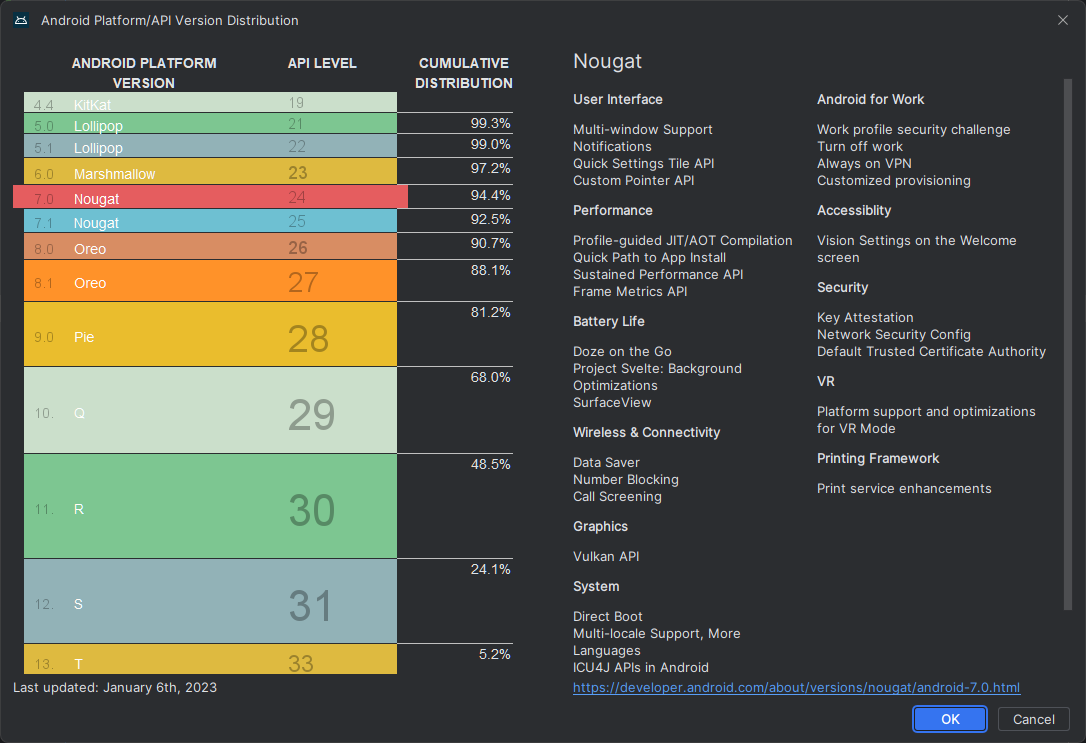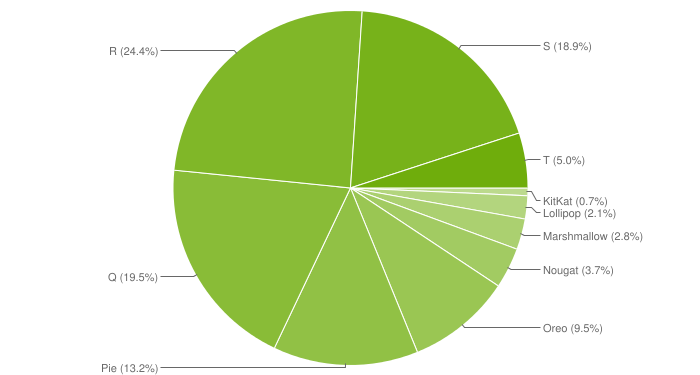The first update to the Android distribution chart in 2023 gives us a peek at how quickly OEMs have delivered Android 13 to their devices. According to the official statistics from Google, the latest OS, Android 13, is running on only 5.2% of devices after five months of its launch. Android 12 and 12L, on the other hand, are running on 18.9% of devices, which is a significant increase from August's numbers, i.e., 13.5%.
Android 8.0 Oreo has dropped below 10%, and you could see a similar downward trend on older versions of Android. Android Jelly Bean, which previously accounted for 0.3%, has been removed from the list, whereas KitKat has dropped from 0.9% to 0.7%.
Speaking of Android 11, around 24.4% of the devices are running it, which is the most. Android 10 is running on 19.5% of the devices. These figures are expected to shift quickly toward newer versions of Android, as security backporting for these OSes, including Android 10, will end in February 2023.
The speed of Android 13 adoption is all thanks to OEMs such as Google, Samsung, OnePlus, Sony, and others. Samsung, in particular, is the best of the lot, as it has updated dozens of its devices to Android 13. It even offers four generations of Android upgrades to its devices, making the transition to newer Android versions a breeze. In fact, only a few months after the arrival of the stable Android 13 update, Samsung updated more than 40 Galaxy devices to Android 13 with One UI 5.0.
OnePlus did try to match Samsung's 4-year Android OS update policy, but the consistency that Samsung offers is missing on OnePlus's part.









